Space
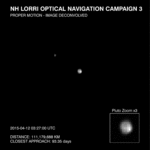
For not being a planet, Pluto certainly has some intriguing features of one. NASA’s New Horizons spacecraft has sent back images of bright and dark regions on the surface of faraway Pluto as it gets closer to flyby in mid-July.
The images were captured using its telescopic Long Range Reconnaissance Imager (LORRI) camera in early to mid-April, as it closed within 70 million miles. A technique called image deconvolution sharpens the raw, unprocessed images beamed back to Earth. New Horizons scientists interpreted the data to reveal the dwarf planet has broad surface markings – some…

As the search continues for Earth-size planets orbiting at just the right distance from their star, a region termed the habitable zone, the number of potentially life-supporting planets grows. In two decades we have progressed from having no extrasolar planets to having too many to search. Narrowing the list of hopefuls requires looking at extrasolar planets in a new way.
But Tau Ceti already doesn't make the cut.
The Tau Ceti system has long been used in science fiction and even popular news and in shows like "Star Trek" it was a very likely place to have life due to its proximity to Earth…
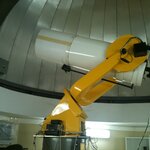
I am presently in Athens for a few days, to give a seminar and meet the local group of CMS physicists. So I took the chance to visit yesterday evening the Astrophysics department of the University of Athens, where at the top floor is housed a nice 40cm Cassegrain telescope (see picture below). There I joined a small crowd which professor Kosmas Gazeas entertained with views of Jupiter, the Moon, Venus, and a few other celestial targets. I need to thank my friend Nadia, a fellow physicist and amateur astronomer, for inviting us to the event.
I cannot hide my envy of astronomers, who can at the…
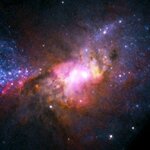
What does it mean when a supermassive black hole exists in a place where it isn't supposed to exist? It's another puzzle of the early universe.
Henize 2-10 is a small irregular galaxy that is not too far away, at least in astronomical terms: 30 million light-years. "This is a dwarf starburst galaxy -- a small galaxy with regions of very rapid star formation -- about 10 percent of the size of our own Milky Way," says Ryan Hickox, an assistant professor in Dartmouth's Department of Physics and Astronomy. "If you look at it, it's a blob, but it surprisingly harbors a central black hole."…
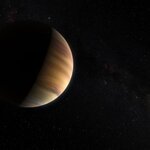
51 Pegasi b, about 50 light-years from Earth in the constellation of Pegasus, was discovered in 1995 and was the the first confirmed exoplanet to be found orbiting an ordinary star like our Sun. It is the archetypal Hot Jupiter -- a class of planets similar in size and mass to Jupiter but orbiting much closer to their parent stars.
Since that landmark discovery, more than 1,900 exoplanets in 1,200 planetary systems have been confirmed, but 51 Pegasi b now has another "first" - it has been directly detected in visible light.
The commonly used method to examine an exoplanet's atmosphere is…
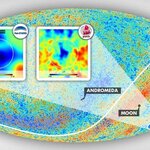
Astronomers have found evidence of a giant void that could be the largest known structure in the universe. The “supervoid” solves a controversial cosmic puzzle: it explains the origin of a large and anomalously cold region of the sky. However, future observations are needed to confirm the discovery and determine whether the void is unique.
The so-called cold spot can be seen in maps of the Cosmic Microwave Background (CMB), which is the radiation left over from the birth of the universe. It was first discovered by NASA’s Wilkinson Microwave Anisotropy Probe (WMAP) in 2004 and confirmed by ESA…
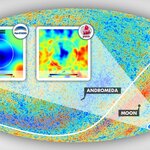
In 2004, astronomers examining a map of the radiation leftover from the Big Bang (the cosmic microwave background, or CMB) discovered the Cold Spot, a larger-than-expected unusually cold area of the sky. The physics surrounding the Big Bang theory predicts warmer and cooler spots of various sizes in the infant universe, but a spot this large and this cold was unexpected.
Now, a team of astronomers led by Dr. Istvan Szapudi of the Institute for Astronomy at the University of Hawaii at Manoa may have found an explanation for the existence of the Cold Spot, which Szapudi says may be "the…
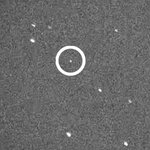
On Oct. 12, 2017, the asteroid 2012 TC4 is slated to whizz by Earth dangerously close.
The exact distance of its closest approach is uncertain, as well as its size.
Based on observations in October 2012 when the space rock missed our planet, astronomers estimate that its size could vary from 12 to 40 meters. The meteor that exploded over the Russian city of Chelyabinsk in February 2013, injuring 1,500 people and damaging over 7,000 buildings, was about 20 meters wide.
Thus, the impact of 2012 TC4 could be even more devastating. “It is something to keep an eye on,” Judit Györgyey-Ries,…

Astronomers and planetary scientists have been waiting with bated breath for the first detailed close-up images of Ceres, the solar system’s largest asteroid. Now, with NASA’s Dawn spacecraft approaching closer each day, tantalizing new color imagery has revealed new details of the geological processes that formed Ceres.
Orbiting the sun between Mars and Jupiter, Ceres is also given the somewhat controversial classification “dwarf planet”. The Dawn spacecraft eased into orbit around Ceres a few weeks ago, and has since then been slowly circling across the dark, night-side of Ceres away from…
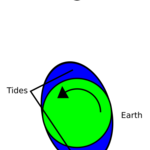
I wrote this when New Horizons was approaching Pluto, and expected to find new moons and possibly a ring system. So, just as a fun question to hook this post on, I asked, could it find a moon of a moon? Or a moon with rings?
As we know now, it didn't find any new moons at all, a great surprise to the team. Its moons had interesting chaotic spins and when imaged close up, they are all elongated, and Hydra might be a double-lobe object perhaps formed in a gentle collision, like Comet 67p. And Kerberos certainly seems to be a double-lobe object. But there were no new moons found, and certainly…